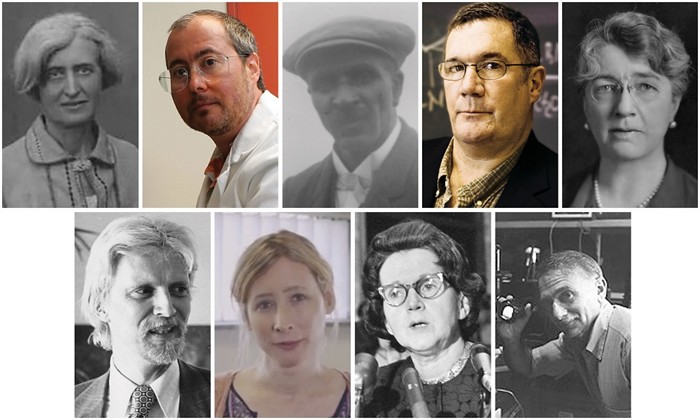These historic scientists influenced agriculture, 3D printing, inorganic chemistry, and more
by Katherine Bourzac , Payal Dhar, special to C&EN , Giuliana Viglione, special to C&EN , Neil Savage, special to C&EN
To celebrate Pride Month—and to play our part in filling gaps in the historical record—C&EN has gathered this preliminary list of trailblazing LGBTQ+ chemists from history and a few we lost more recently. This list of innovative scientists highlights the long-standing contributions of LGBTQ+ chemists, many of whom you won’t find in textbooks.
Some of the scientists we celebrate here, like Bruce Voeller, were out in their lifetimes. In addition to making scientific contributions, these trailblazers had a tremendous impact on the people they worked with and as activists. They mentored and inspired LGBTQ+ students, helped reframe how the public perceived AIDS, and challenged their colleagues’ gender biases.
Others could not be out because of workplace discrimination and physical danger. Before the civil rights movement emblematized by the 1969 Stonewall Uprising—which Pride Month commemorates to this day—people were arrested, beaten up, outed in local newspapers, and fired for going to gay bars in the US. It was not until 2020 that the US Supreme Court extended to LGBTQ+ people a federal law prohibiting employment discrimination. Today, about 80 countries criminalize same-sex relationships, and many others have laws that deny full civil rights to or actively discriminate against LGBTQ+ people. Since 2020, 100 bills targeting the rights of transgender people, including children, have been introduced in US state legislatures. And laws are only one measure of acceptance. The need for people to hide their identities makes it challenging to compile stories like the ones here.
“In the past, a lot of people hid who they were, and we may never know they were there,” says Paulette Vincent-Ruz, a chemistry education researcher at the University of Michigan. She also points out all the potential scientific talent lost to the AIDS epidemic. “We literally lost a generation of thinkers, artists, everything,” she says.
Another challenge when putting together LGBTQ+ histories is that the way we conceive of our identities is always changing; historical figures didn’t necessarily use the same language to describe themselves as we would today. For example, though we don’t know how George Washington Carver and Rachel Carson would have described their sexual orientations, both had close same-sex relationships, and historians and biographers have considered them among influential LGBTQ+ scientists. To make this list, C&EN relied on historical resources from organizations like GLAAD, independent research, and surveying our audience.
We’d love your help with filling in gaps in chemistry history, and we’ll keep updating this page. If you’d like to tell us about an influential historical or recently deceased LGBTQ+ chemistry hero, please complete the survey at cenm.ag/historiclgbtqsurvey.


